Alienware M17x R4 Notebook Review: Ivy Bridge and the GeForce GTX 680M
by Dustin Sklavos on September 21, 2012 12:01 AM ESTApplication and Futuremark Performance
I find myself often saying "at this point, Ivy Bridge is pretty much a known quantity," but that really does remain true. What we want to pay attention to with the M17x R4 is the performance difference between the i7-3610QM and the i7-3720QM, since the 3610QM is the baseline CPU for the M17x R4 while the 3720QM is a $150 upgrade.
Unfortunately, our testing of the M17x R4 was not without hiccups. Total War: Shogun 2 crashes during benchmarking, a problem that's been reproduced in NVIDIA's labs. The current BIOS update coupled with most recent drivers are supposed to ameliorate that problem, but that hasn't been the case. When that problem is resolved we'll endeavor to update Bench with those benchmark results.
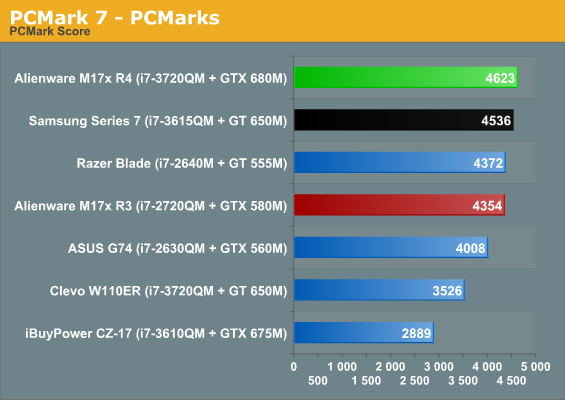
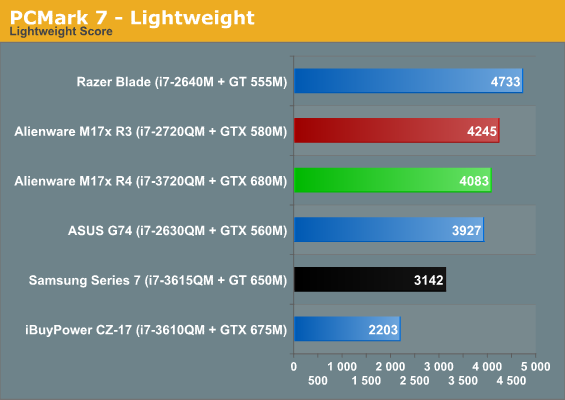
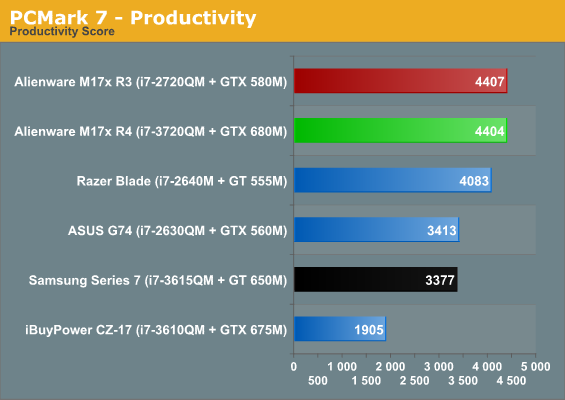
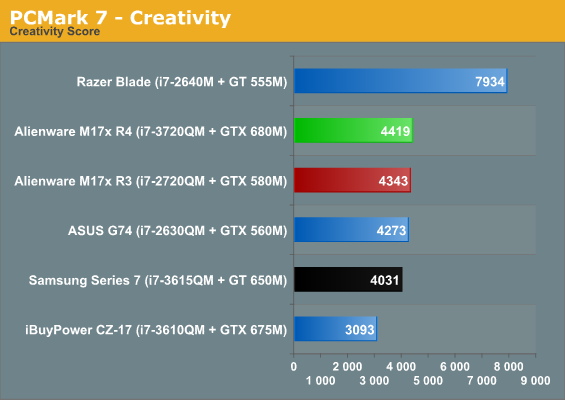
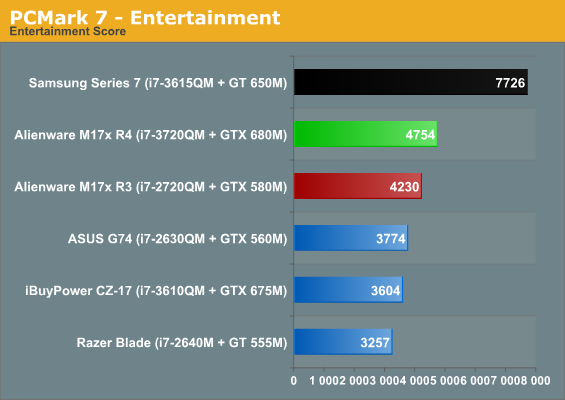
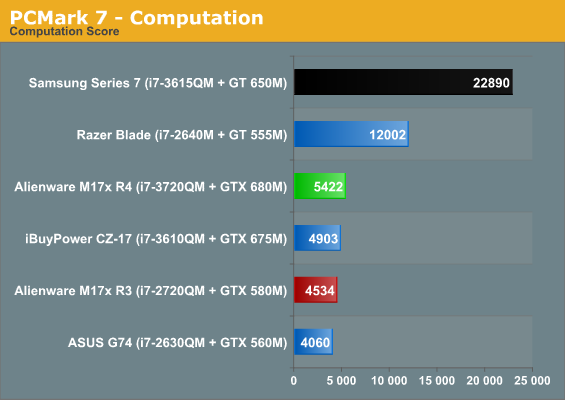
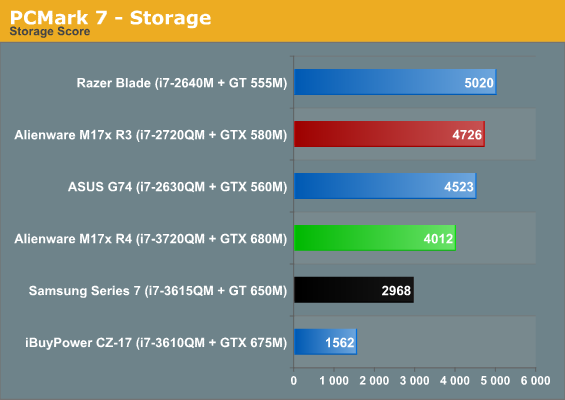
The essential problem in PCMark 7 is that the M17x R4 is relying on SSD caching instead of an actual SSD as our M17x R3 system does. That puts it well behind some of the competing systems we've tested, except for the CZ-17, which doesn't even have the benefit of SSD caching.
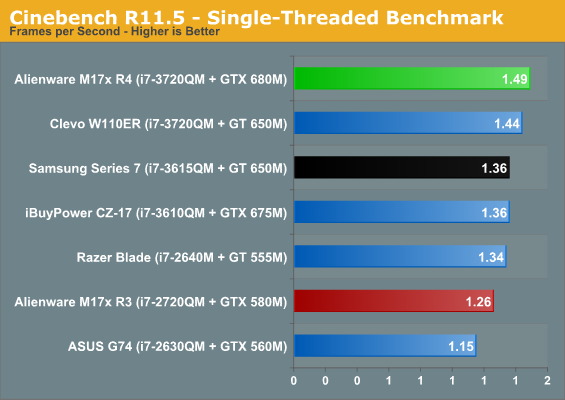
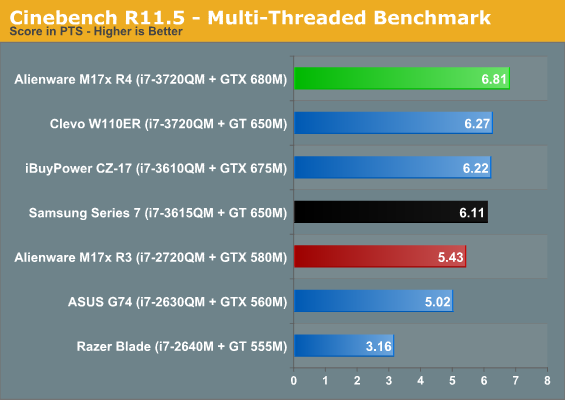
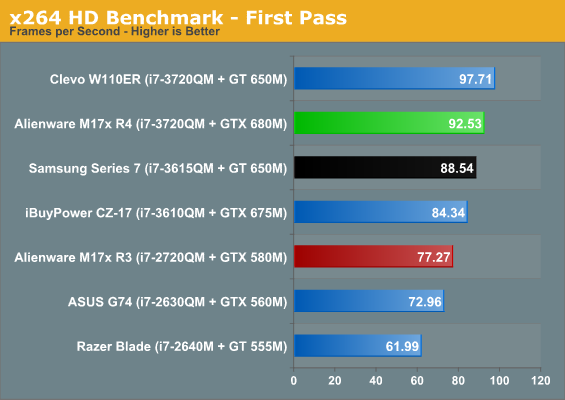

You could reasonably argue that in most cases, the M17x R4's substantial heft compared to the slight Clevo W110ER allows for a more powerful cooling system, in turn allowing the i7-3720QM at the heart of the M17x R4 to run faster longer. The jump from the i7-3610QM and i7-3615QM to the i7-3720QM is incremental at best, though, and doesn't really justify the extra $150. Note that the only differences between the i7-3610QM and i7-3615QM are the socket type and a slight bump in top IGP turbo speed on the 3615QM; these chips are otherwise specced identically.
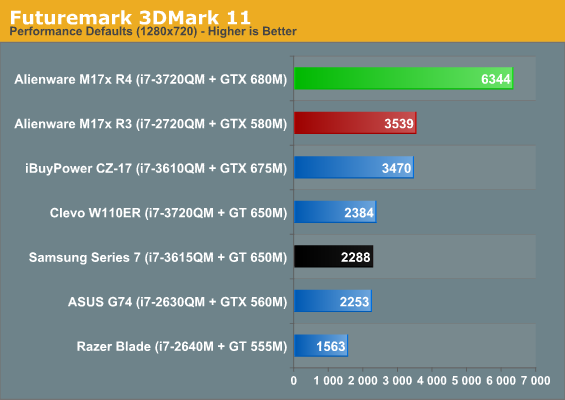
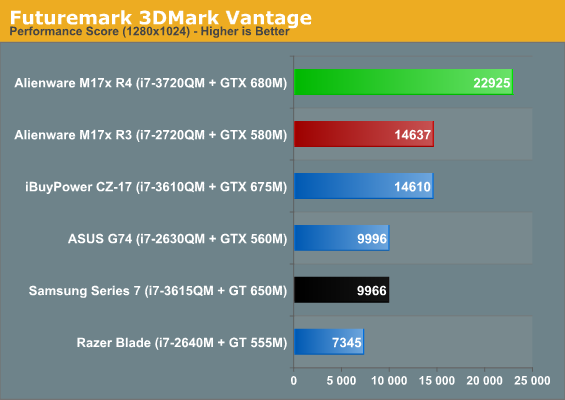
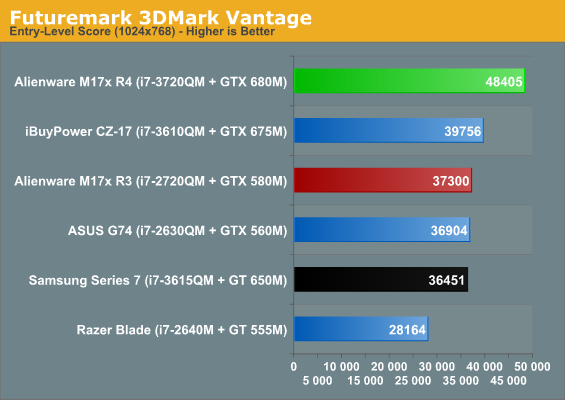

And here's where things start getting real. If you weren't excited to see how the GTX 680M performs in games you should be now, because this is one of the largest jumps in performance we've seen from a top-end mobile GPU in quite some time. Note that the GT 650M is essentially a GTX 660M at slightly lower clocks; with that knowledge in mind, the Samsung Series 7 serves as a suitable proxy for an entry level M17x R4.










61 Comments
View All Comments
shadowyani - Friday, September 21, 2012 - link
At least the keyboard no longer ghosts.knekker - Friday, September 21, 2012 - link
I don't understand why Anandtech are wasting their time reviewing this laptop, when (appart from the CPU) MSI for quite some time has a significant better offer, compared to this overpriced brick.http://www.laptopmag.com/review/laptop/msi_gt70_on...
DanNeely - Friday, September 21, 2012 - link
I think that's the same laptop platform that they reviewed in iBuy Power branding a month ago. Specs aren't identical with laptopmag's test model; but reviewing two models of the same platform offers little value compared to looking at a second vendors design.http://www.anandtech.com/show/6173/ibuypower-valky...
nerd1 - Friday, September 21, 2012 - link
M17XR4 with 7970M can be found around $1800 from various vendors - and 7970M is not too shabby against 680M and totally smokes 675M / 6990M GPU.I'd rather get m17xr4 w/7970M than spending almost the same money to cz17 with 680M. If I'm paying almost $2000 for a gaming laptop, I won't get fugly laptops.
tviceman - Friday, September 21, 2012 - link
Why does Nvidia hate memory bandwidth so much?DanNeely - Friday, September 21, 2012 - link
high clock rates suck power; in mobile platforms they want to minimize that as much as possible. They're also not stupid and I see no reason not to assume their default GPU/memory clocks were picked to give the maximum average fps scores within their target TDP.Harmattan - Friday, September 21, 2012 - link
I've owned and spent hours and hours with both single and dual configurations of the 7970m and 680m (have an m18x with dual 680ms right now). In single configuration, on an Alienware, 7970m is the way to go: drivers are nearly as good as nVidia's and performance with the 680m is neck-and-neck (which 680m being about 7% faster on avg.). The $250 lower price of the 7970m vs. the 680m wins.That said, a single 7970m has problems on Clevo laptops in the form of AMD's god-awful power management system, Enduro. You see around 10% reduced performance on Clevos/Sagers when compared to Alienware's which do not have the Enduro issue. If you're going Clevo/Sager, go 680m.
Finally, 7970m Crossfire drivers are a bit of a mess: lower gains than nV and, in some games, no gain at all over a single GPU. If you're going dual GPU in a laptop, go 680m SLI.
JarredWalton - Friday, September 21, 2012 - link
Enduro can be even more than a 10% loss of performance -- try more like 30-50% in some games (depending on settings). However, AMD is aware of the problem and tells me they're working on a fix that should hit in the next month. We'll see... 7970M Clevo review coming soon from me, though!prophet001 - Friday, September 21, 2012 - link
That GPU is impressive. Even on Civ 5 it holds its own.Nice review, nice laptop.
Thank you
Death666Angel - Friday, September 21, 2012 - link
Really a pity they didn't do any updates except replace the innards. If there every was a time to buy a gaming laptop, it would be today, 60 fps @1080p with their hardware being up to date until late 2013 when the new console generation hits. Not bad.I like the HDMI in btw. Don't see that very often. :-)